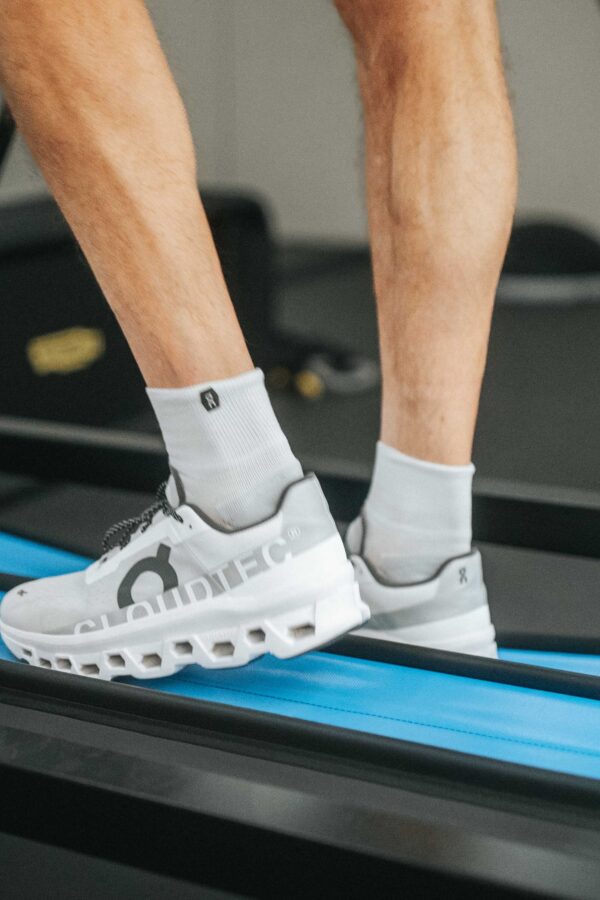Join the team!

The human body is designed to move. If it doesn’t get enough movement, the consequences are enormous: chronic diseases, musculoskeletal damage and depression, to name but a few. Bad news: we spend six hours a day sitting. In the case of office workers in particular, this figure is usually higher. Good news: it doesn’t have to be this way though. We will show you just how easy it is to avoid long periods of sitting and why you should do so. Get your backside out of that chair!
What do we mean?
We sit a lot and for extended periods. Although it feels comfortable at the time, it leads to many problems. When sitting for long periods, your posture is static and pretty much rigid. Structures such as ligaments, discs, cartilage and muscles are forced to maintain the same position for long periods of time. We notice some of the effects of this relatively quickly. Our muscles become tense and shortened, and the mobility of our joints decreases. Neck and back problems in particular are a problem for many office workers. Inactivity reduces our blood flow,
which also puts our brain on standby. We become less efficient, less able to concentrate and more tired.
Cancer, dementia and cardiovascular disease are further risks associated with a lack of exercise.
It therefore pays dividends to overcome your inner couch potato and incorporate a bit more exercise into your daily routine.
What should you do?
Get up, of course!
What you do next is almost irrelevant. The most efficient way is to fill your breaks with movement. Sometimes it’s enough to simply continue working while standing.
Movement increases blood flow, which increases brain activity. and makes us better able to think “outside the box”. In other words, think more complex thoughts and work more creatively and productively.
It’s that simple.
Walk more.
Stand when travelling on public transport.
Get a standing desk.
Walk around every now and then.
Do the Macarena with your team.
“Habit stacking” is an ingenious way to integrate new things into your everyday life. Combine the things you never have time to do with the daily activities you do without thinking. For example, stand up every time you need to make a phone call. If you’re sitting in a train, do a breathing exercise. Stretch your shoulders while you wait for the machine to make your coffee.
Did you know?
«Sitting is the new smoking»
– Dr Kelly Starrett, physiotherapist
Do you go to Bodyforming classes on a regular basis?
Do you do yoga or go jogging?
Great!
Nonetheless, that’s no excuse for not taking exercise breaks. None of those things are enough on their own to compensate for a sedentary lifestyle.
Just standing on the Sensopro tapes has many effects:
It changes your posture. It gets you out of your rut and breaks the monotony.
It makes you stand up straight. Relieves your shoulders and neck.
The increased activation of your muscles means that you unconsciously avoid passive joint positions (e.g. hyperextended knees, hollow back).
Multitasking: The brain has to cope with the office function you’re currently engaged in while also maintaining the body’s balance. This improves your coordination.
Best of all, you don’t even have to think about what you’re doing on the devices. Bounce a little or stand, a furious sprint or a few squats. That’s enough.
We recommend the following training sessions:
Work up a sweat with a workout of your choice at the level of difficulty that suits you.
Want to know more?
Does breaking up prolonged sitting improve cognitive functions in sedentary adults? A mapping review and hypothesis formulation on the potential physiological mechanisms | BMC Musculoskeletal Disorders | Full Text (biomedcentral.com)
Get Up, Stand Up: The Effects of a Non-Sedentary Workspace on Information Elaboration and Group Performance - Andrew P. Knight, Markus Baer, 2014 (sagepub.com)
auf-stehen_faktenblatt_d.pdf
